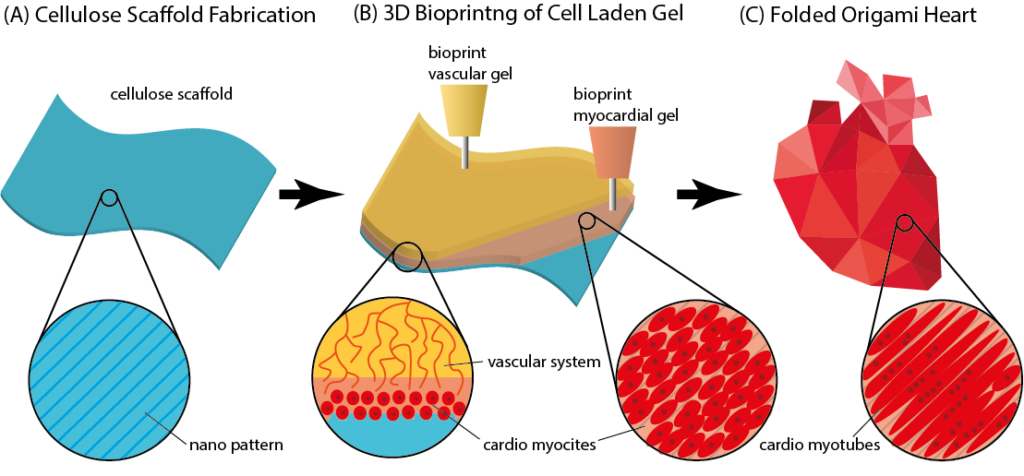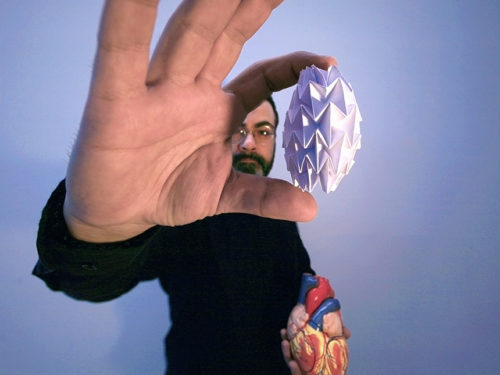KOKORO Project
Creating a heart model inspired by origami – In the Nano Argovia project KOKORO, scientists are using nanostructured cellulose as a scaffold for cell cultures.
In the Nano Argovia project KOKORO (Japanese for “heart”), a team of researchers from the School of Life Sciences at the University of Applied Sciences Northwestern Switzerland (FHNW), the Department of Biomedicine (DBM) at the University of Basel, and Omya International AG are developing a novel, three-dimensional heart model.
Cellulose as cell culture scaffold
The team led by Dr. Joachim Schoelkopf (Omya) is developing a suitable cellulose paper whose nanostructures provide an ideal culture scaffold for myocardial cells. Using a 3D bioprinting process, the research group working under Dr. Maurizio Gullo (FHNW) and Dr. Joachim Köser (FHNW) applies thin coatings of myocardial cells onto a cellulose layer and thereby build the cardiac tissue. The research group led by Dr. Andrea Banfi (DBM) develops a vascular cell network which will ensure an optimal nutrient supply of the cardiac tissue.

The miniaturized artificial heart model is then created by folding the resulting tissue layers similar to paper origami. In a custom bioreactor developed by the research group of Dr. Anna Marsano (DBM), the heart model is cultured while being mechanically and electrically stimulated. Such physiological stimuli are similar to those experienced by native cardiac tissue and will help to achieve optimum tissue maturation before the heart models undergo in-depth characterization and physiological assessment.

An ideal way to test therapies
Using the model, the interdisciplinary team of researchers working under project leader Maurizio Gullo intend to investigate various tissue parameters, as well as the contractility, volume changes and functionality of the “paper heart.” An artificial heart model of this kind provides ideal means to test therapeutic approaches for treating heart strokes and other forms of cardiovascular disease. In future, the project findings will doubtlessly serve as base for developing tissue patches aimed for cardiac tissue regeneration.
Suitable cell culture scaffold
“The folding technique is an elegant way to overcome the complexity of the 3D bioprinting process as well as to enable the manufacturing of larger sample quantities. Inspired by origami, the cellulose-based cell culture scaffold enables the creation of 3D heart models,” explains Maurizio Gullo.
“Cellulose-based fiber networks are increasingly being used as cell cultures scaffolds. Careful selection of the fiber dimensions and their spatial arrangement facilitates the building of artificial tissues.”
Dr. Joachim Schoelkopf, Head of Fundamental Research at Omya International (Oftringen, AG)
Comments
No comment posted about KOKORO Project